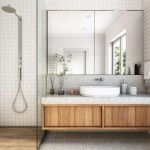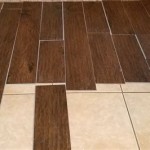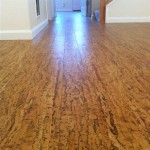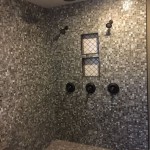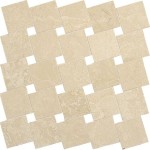Can You Use Tin Ceiling Tiles on Walls? A Comprehensive Guide
Tin ceiling tiles, once primarily associated with ornate Victorian-era ceilings, have experienced a resurgence in popularity as a versatile design element. Their embossed patterns, metallic sheen, and historical charm make them an attractive option for various interior design projects. This has led to a growing interest in using these tiles in unconventional ways, particularly as wall coverings. While traditionally intended for ceilings, employing tin tiles on walls presents both opportunities and challenges. This article will explore the feasibility, considerations, and practical aspects of using tin ceiling tiles as a wall treatment.
Understanding the fundamental characteristics of tin ceiling tiles is crucial before considering their application on walls. These tiles are typically constructed from thin sheets of steel, often coated with tin for corrosion resistance and aesthetic appeal. They are available in a wide variety of patterns, ranging from simple geometric designs to intricate floral motifs. The tiles are generally lightweight, which simplifies installation. However, the thin gauge of the metal also renders them susceptible to dents and damage if not handled carefully.
Historically, tin ceiling tiles were primarily used to cover up imperfections in plaster ceilings and to add a decorative element to a room. Their popularity peaked in the late 19th and early 20th centuries, and many original examples can still be found in older buildings. Today, modern reproductions are widely available, offering similar aesthetic characteristics with improved materials and manufacturing processes.
Key Point 1: Assessing the Suitability of Tin Tiles for Wall Application
The primary factor determining the suitability of tin ceiling tiles for wall application rests on the intended aesthetic and functional requirements of the space. Tin tiles can introduce a unique visual texture and metallic accent to a room, making them particularly attractive for accent walls, backsplashes, or wainscoting. However, it's essential to recognize that their inherent properties may not make them suitable for all wall applications.
One key consideration is the level of traffic and potential for impact in the area where the tiles will be installed. In high-traffic areas, such as hallways or entryways, the relatively soft metal of tin tiles can be easily dented or scratched. This can compromise the aesthetic appeal and potentially require frequent repairs or replacements. In such cases, reinforcing the tiles with a backing material or applying a protective coating may be necessary.
Another aspect to consider is the moisture and humidity levels in the room. While tin offers some degree of corrosion resistance, prolonged exposure to moisture can lead to rusting or discoloration. This is particularly relevant in bathrooms, kitchens, or other areas prone to high humidity. In such environments, sealing the tiles with a waterproof coating is crucial to prevent damage and maintain their appearance.
Furthermore, the structural integrity of the wall itself must be assessed. Tin tiles are typically installed using nails, screws, or adhesives. A solid and stable substrate is essential to ensure proper adhesion and prevent the tiles from detaching over time. If the wall is uneven or damaged, it may need to be repaired or reinforced before installing the tiles.
Key Point 2: Installation Methods and Best Practices
The installation method employed for tin ceiling tiles on walls significantly impacts the final appearance and durability of the installation. Several approaches can be used, each with its own advantages and disadvantages. The choice of method depends on the type of tile, the condition of the wall, and the desired aesthetic.
One common method involves adhering the tiles directly to the wall using construction adhesive. This approach is relatively simple and straightforward, but it requires a clean and level surface for optimal adhesion. The adhesive should be specifically designed for use with metal and should be applied evenly to the back of the tile. It's important to follow the manufacturer's instructions regarding application and curing time.
Another method involves using small nails or screws to secure the tiles to the wall. This approach provides a more secure attachment, particularly on uneven or textured surfaces. However, it requires careful placement of the fasteners to avoid damaging the tiles or creating unsightly blemishes. Pre-drilling pilot holes can help prevent splitting or cracking of the tiles during installation.
For larger installations, it may be beneficial to install a plywood or backer board to the wall before attaching the tin tiles. This provides a smooth and uniform surface for the tiles, ensuring a consistent appearance and preventing any underlying imperfections from showing through. The backer board can be attached to the wall using screws or adhesive, and the tin tiles can then be attached to the backer board using the chosen method.
Regardless of the chosen method, careful attention to detail is essential for a successful installation. Proper alignment of the tiles, consistent spacing, and clean cuts around edges and corners are crucial for creating a professional-looking finish. Using a metal shears or a specialized cutting tool can help ensure clean and accurate cuts. The cut edges can then be deburred to prevent sharp edges.
Key Point 3: Design Considerations and Aesthetic Integration
Beyond the practical aspects of installation, careful consideration must be given to the design and aesthetic integration of tin ceiling tiles into the overall space. The choice of tile pattern, finish, and layout significantly impacts the visual impact and overall harmony of the room.
The pattern of the tin tiles should complement the existing architectural style and design elements of the room. Ornate and intricate patterns may be well-suited for Victorian or traditional interiors, while simpler geometric patterns may be more appropriate for modern or contemporary spaces. Consider the scale of the pattern in relation to the size of the wall. Larger patterns can be overwhelming in smaller spaces, while smaller patterns may lack visual impact in larger areas.
The finish of the tin tiles also plays a crucial role in the overall aesthetic. Tin tiles are available in a wide range of finishes, including natural tin, painted, antiqued, and textured. The choice of finish should be coordinated with the existing color palette and materials in the room. Natural tin finishes offer a classic and timeless look, while painted finishes allow for greater flexibility in color coordination. Antiqued finishes can add a touch of character and vintage charm.
The layout of the tin tiles on the wall should also be carefully planned. Consider whether to run the tiles horizontally, vertically, or diagonally. Horizontal layouts can visually widen a space, while vertical layouts can create the illusion of height. Diagonal layouts can add a dynamic and unconventional touch. The layout should be balanced and symmetrical, with consistent spacing and alignment.
Furthermore, consider the integration of the tin tiles with other design elements in the room, such as lighting, furniture, and accessories. The metallic sheen of the tiles can reflect light and create a sense of depth and dimension. Strategic placement of lighting can accentuate the texture and pattern of the tiles. Coordinate the finishes and colors of the furniture and accessories with the tiles to create a cohesive and harmonious look.
In summary, while tin ceiling tiles are traditionally used for ceilings, their application on walls is a viable option for creating unique and visually appealing interior designs. Careful consideration of the suitability of the tiles, proper installation techniques, and thoughtful design integration are essential for achieving a successful and long-lasting result. By addressing these key considerations, designers and homeowners can effectively use tin ceiling tiles to transform ordinary walls into extraordinary features.

5 Ways To Use Tin Ceiling Tiles In Your Own Home Decorative Inc

Repurposed Vintage Tin Ceiling Wall Decor

Repurposed Vintage Tin Ceiling Wall Decor

4 Great Ways To Use Faux Tin Ceiling Tiles In Your Home

Aecinfo Com News 6 Alternative Uses For Tin Ceiling Tiles

Pros Cons Of Using Tin Ceiling Tiles As A Backsplash Decorative Inc

How To Paint Tin Ceiling Tiles Backsplash Inexpensive Ideas Painted

The Top 10 Best Faux Tin Ceiling Tiles On A Budget Decorative Inc

How To Use Tin Ceiling Tiles As A Backsplash

Cornelius Tin Ceiling Tile Wallpaper By Brewster Lelands
Related Posts



